By Kent Wilcox
Originally published in June 2014
Among the mysteries in DuPont Forest is the saga of an abandoned station wagon that is slowly rusting away on Poplar Hill Loop, a 1.4 mile trail that encircles Poplar Hill in the southeastern portion of DuPont State Recreational Forest. Near the gently sloping top of Poplar Hill is an open meadow populated with tall grasses, shrubs, and young yellow poplar trees. The rectangular shape of the meadow, its location less than 400 feet from Turkey Knob Road, and the complete absence of fallen trees or stumps suggest that this one acre field was intentionally cleared by humans. There are no visible signs of any structures, but perhaps a thorough search in the winter would reveal remnants of a stone chimney or foundation for a cabin.
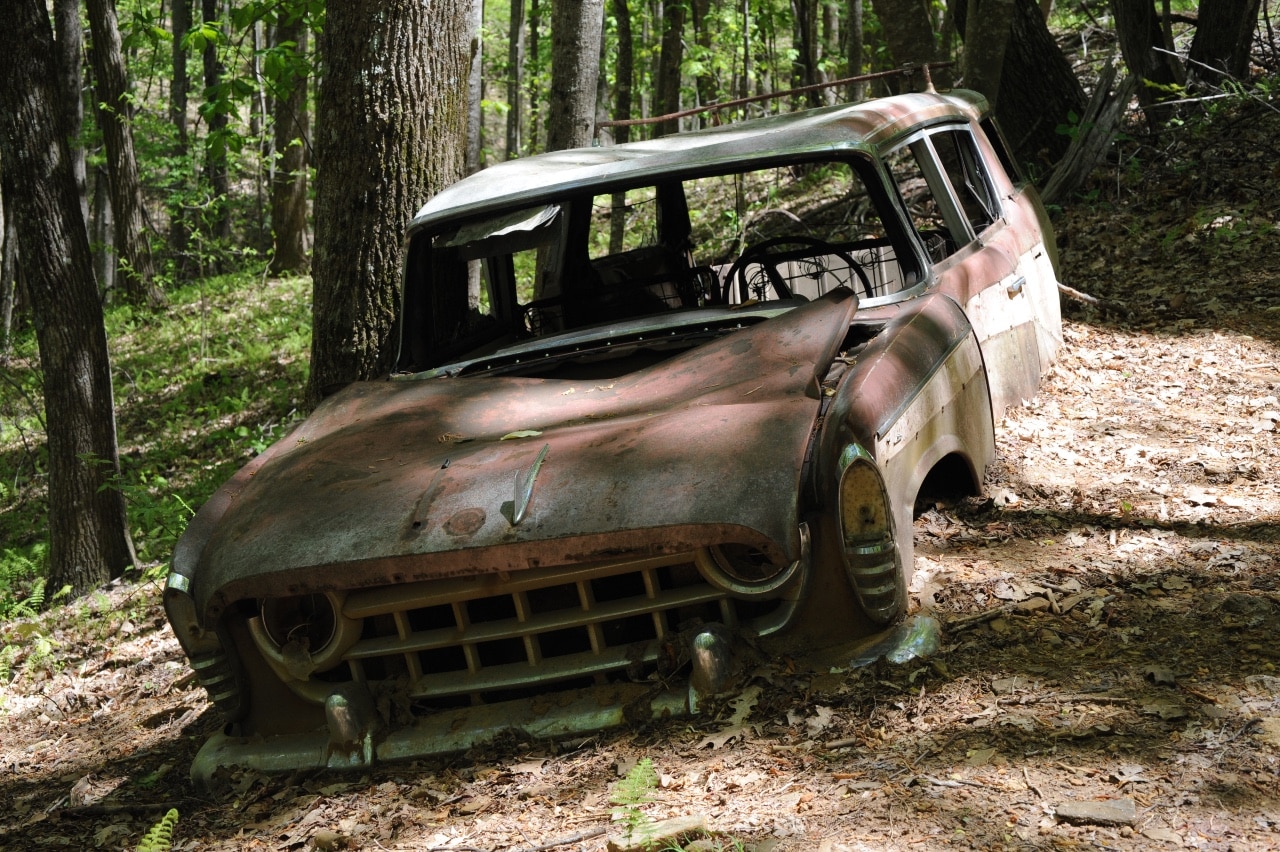
Early mountain settlers preferred home sites next to a spring or stream. Not far downhill from the Poplar Hill meadow is a spring for an unnamed tributary of Briery Fork Creek. The flow from this spring is minimal and may be dependent on seasonal precipitation. Perhaps a small dam was constructed to contain the water during drier periods. More dependable water would have been available from Little Briery Creek, but fetching water from this site required a 0.3 mile hike to the stream and a strong effort to carry gallons of water uphill (an elevation change of 200 feet) everyday. If the trickle from the nearby spring was insufficient, the family may have taken a wagon (or perhaps a station wagon) approximately 1.2 miles down Turkey Knob Road to a 0.5 stub road that ended at Briery Creek (this stub was Little Briery Trail but is no longer maintained as a trail).
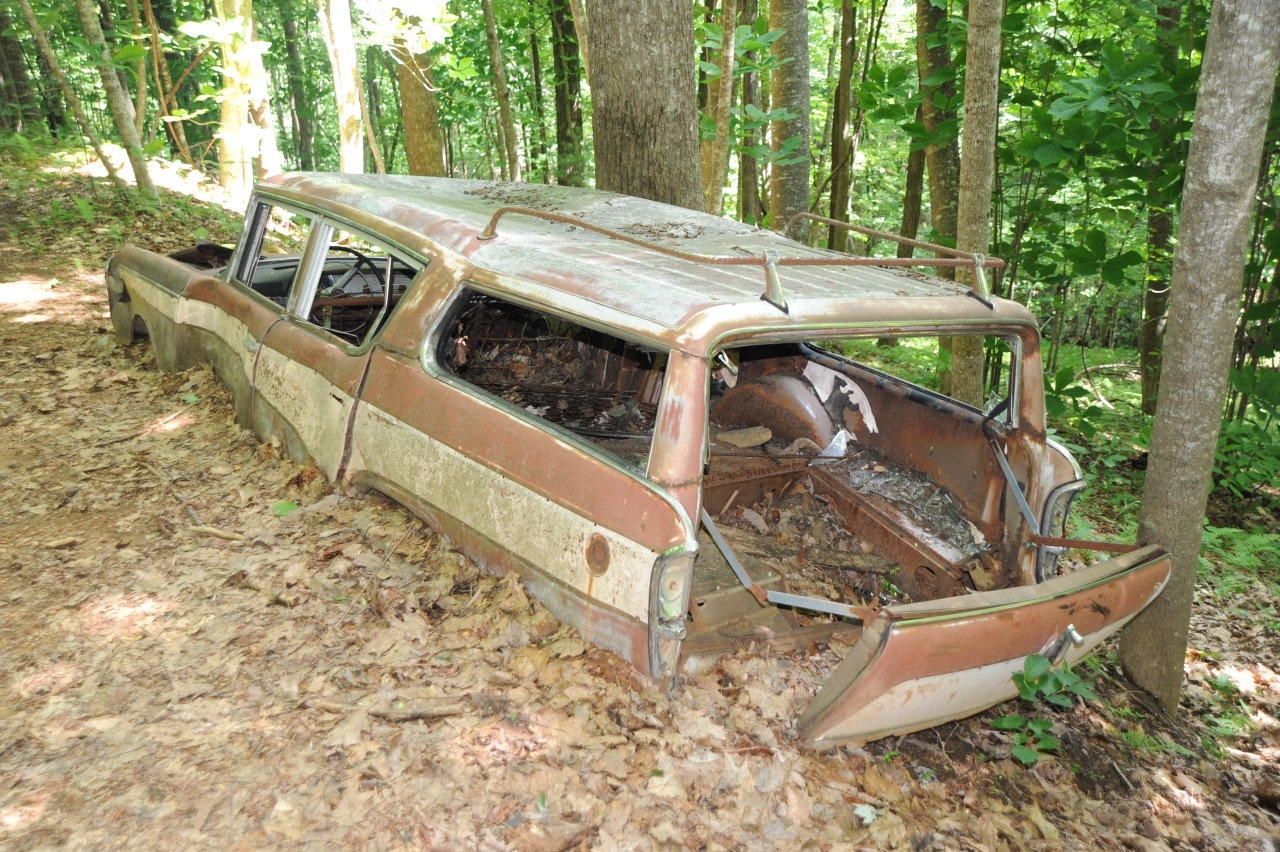
The fact that only shrubs and young trees are growing in the meadow suggest that the field was occupied or used by humans within the last 40 years. This speculation is supported by the presence of the rusty remains of a 1957 Rambler Custom Cross County Station Wagon that came to rest on the eastern side of Poplar Loop Trail approximately 400 ft from the meadow. It is reasonable to assume that the 3000 pound vehicle got close to its final resting site under its own power, but it is completely immobile now. The hulk lies at an angle and is buried in dirt up to its bumpers. Scavengers have removed hubcaps, three tires, the battery, radiator, and other engine parts. Vandals have smashed windows, lights and mirrors, removed chrome trim, destroyed the upholstery, and dented the body. The interior is filled with debris that provides habitats for numerous nest-building creatures. Without a license plate or serial number, it is impossible to trace the ownership of this vehicle, but the general history of the 1957 Rambler Cross County Station Wagon is informative.
The 1957 Rambler was built by AMC (American Motors Corporation). AMC was created in 1954 by the merger of the Nash Motors Corporation (based in Kenosha, WI) and the Hudson Motor Car Company (based in Detroit, MI). When George Mason, president of Nash Motors, passed away in 1954, his assistant George Romney (father of Mitt Romney) became president of the newly-formed AMC. Mr. Romney committed the company=s resources to the design and marketing of a smaller car called the Rambler that would be an attractive alternative to the larger cars produced by General Motors, Ford and Chrysler. The 1956 Rambler debuted on Dec. 15, 1955. It was marketed as a compact, safe, economical, roomy car that could average 24 mpg (13 mpg in town, 20 mpg on the highway at 50 mph based on test results published in Popular Mechanics).
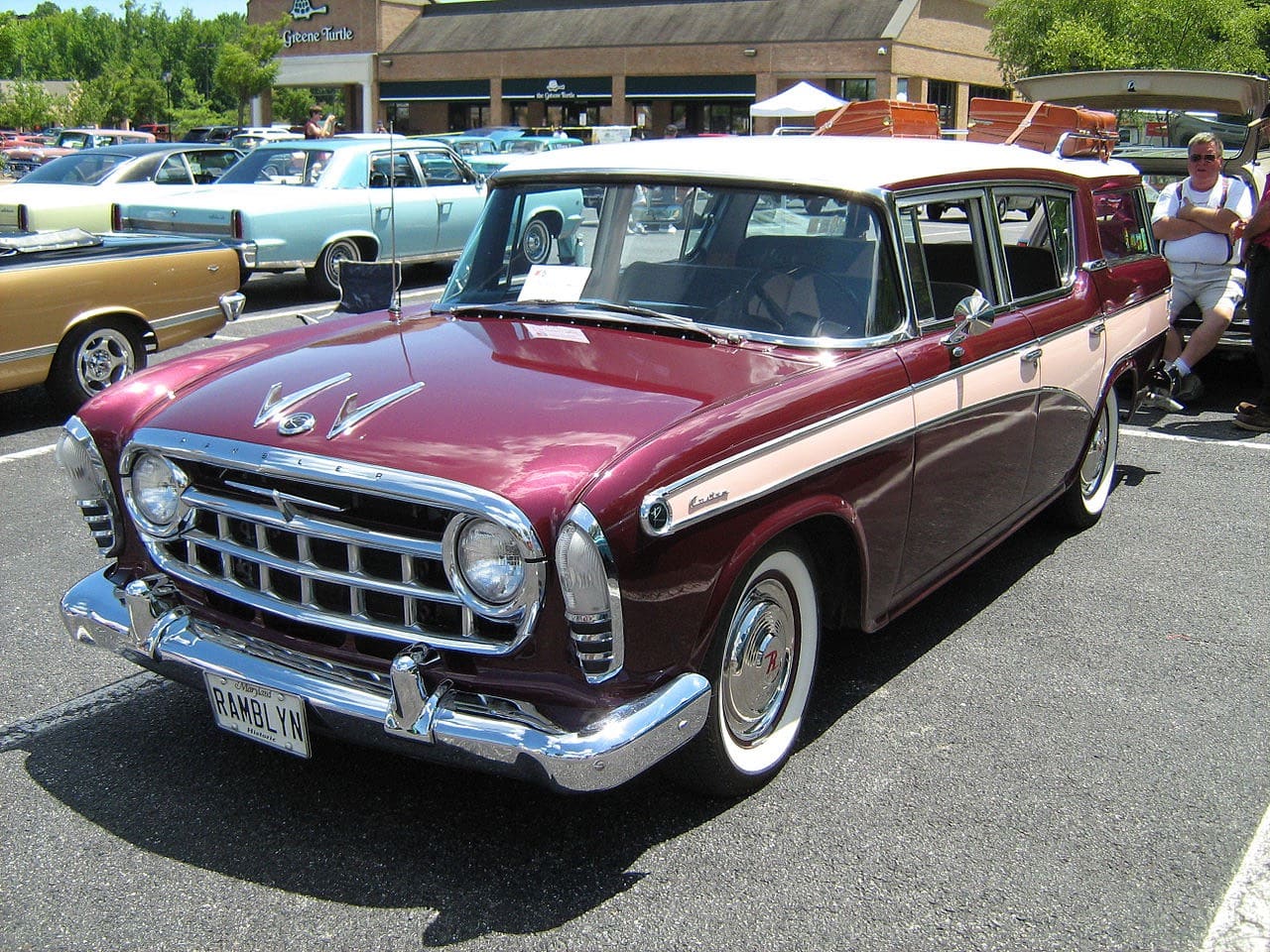
The 1957 Rambler Cross Country Station Wagon was offered in solid colors or a dozen different two- or three-tone paint schemes. It came standard with 4 doors, automatic transmission, a roll-down tailgate window, a roof rack and a straight 6 cylinder engine with 125 hp for $2,500 or an optional V-8 engine with 190 hp for $2,630. For comparison, the list price for the 1957 Ford Thunderbird was $3,408 and the 1957 Corvette sold for $3,200. The federal minimum wage in 1957 was $1 per hour, equivalent to an annual salary of $2,000. A AWeather Eye@ air conditioning unit, power steering, and seat belts were available as options. Approximately 32,000 units were produced with the 6 cylinder engine and 7,000 units were produced with the V8 engine.
The two-tone Rambler Station Wagon on Popular Hill Loop has a straight 6 cylinder engine and the optional Weather Eye air conditioning unit, presumably because it was originally purchased by someone living in the hot south. The 74,445 miles on the odometer suggest that the vehicle was driven for 7 to 10 years, assuming the owner was not a long distance traveling salesman or a runner hauling moonshine every week to Charleston or Atlanta (not too likely in an air-conditioned 3000 lb station wagon with 125 hp). How and why this vehicle came to its final resting place on Poplar Hill Loop perhaps more than 40 years ago may forever remain a mystery but it will no doubt serve as a conversation piece for at least another 40 years.
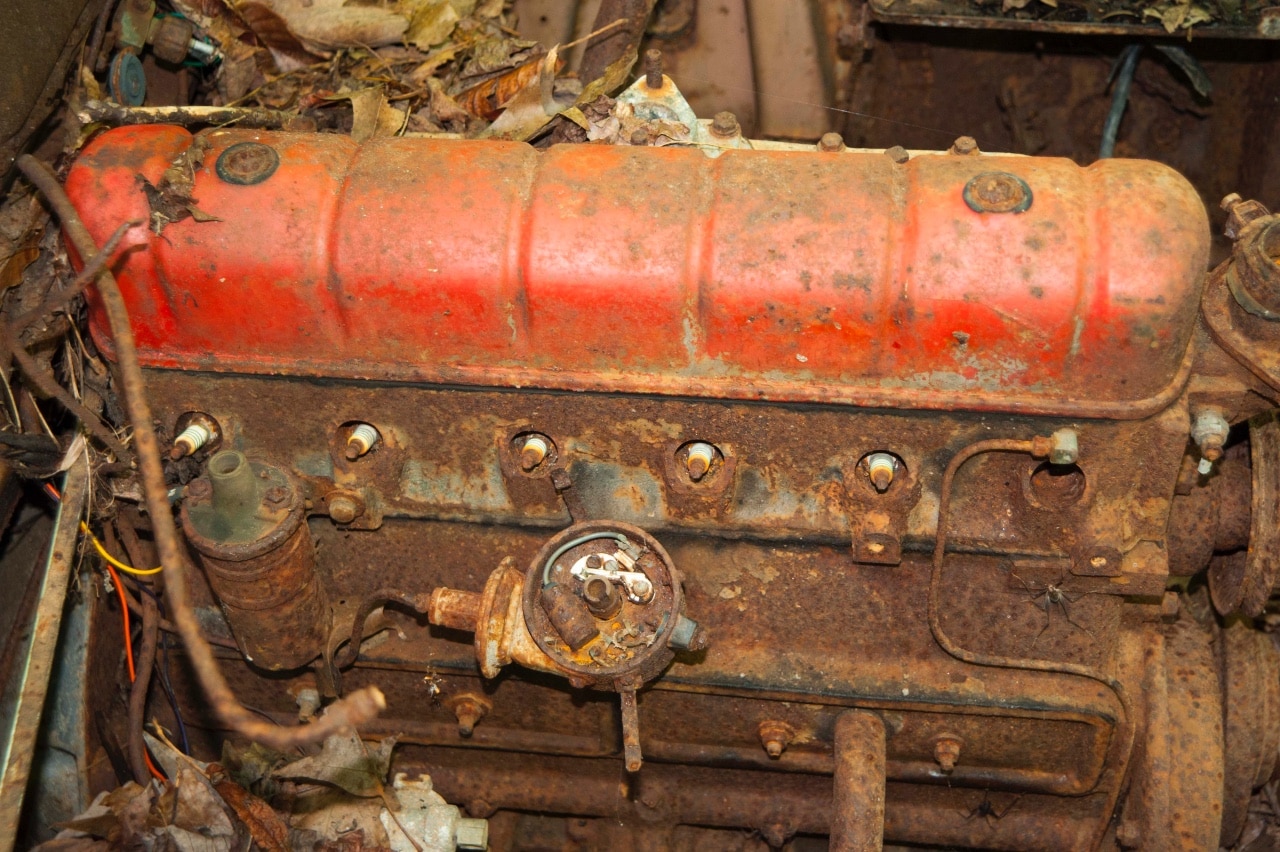
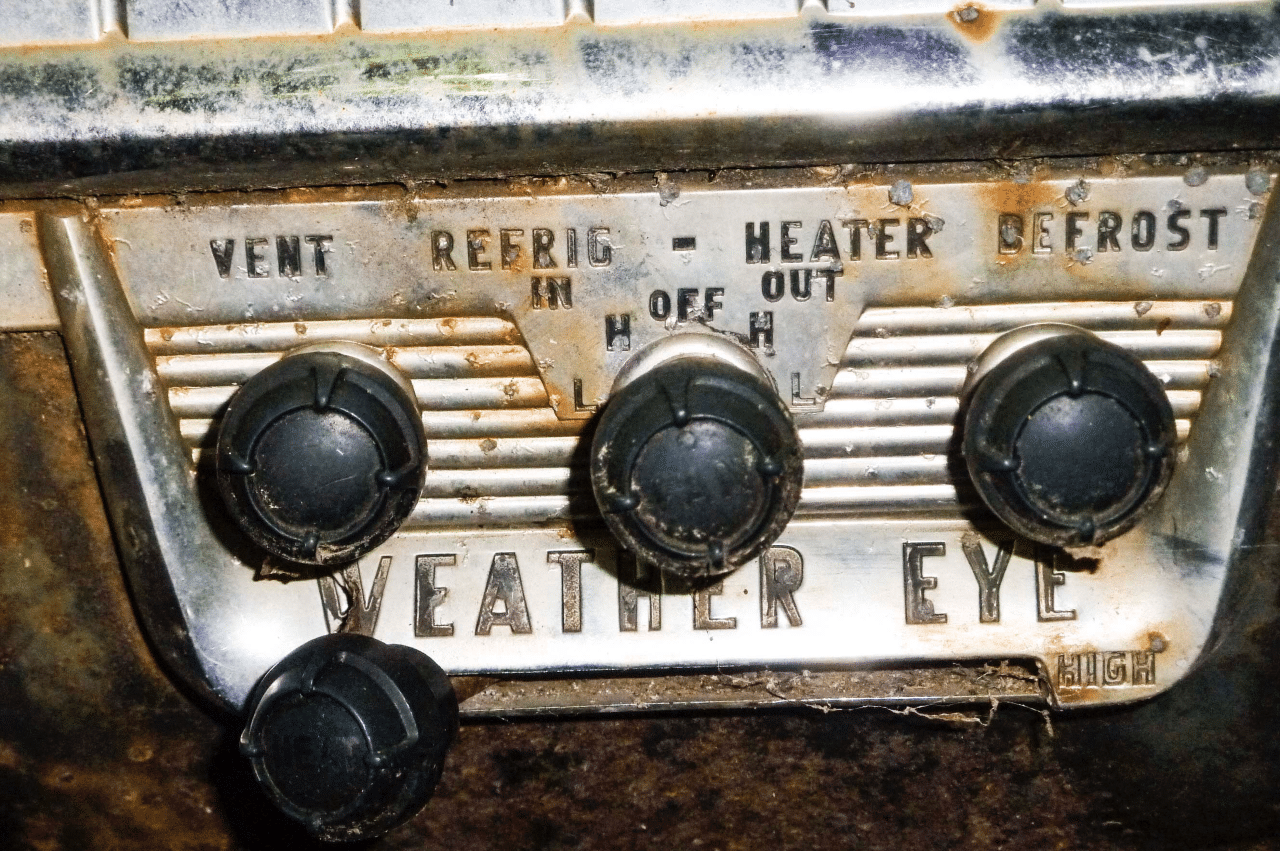
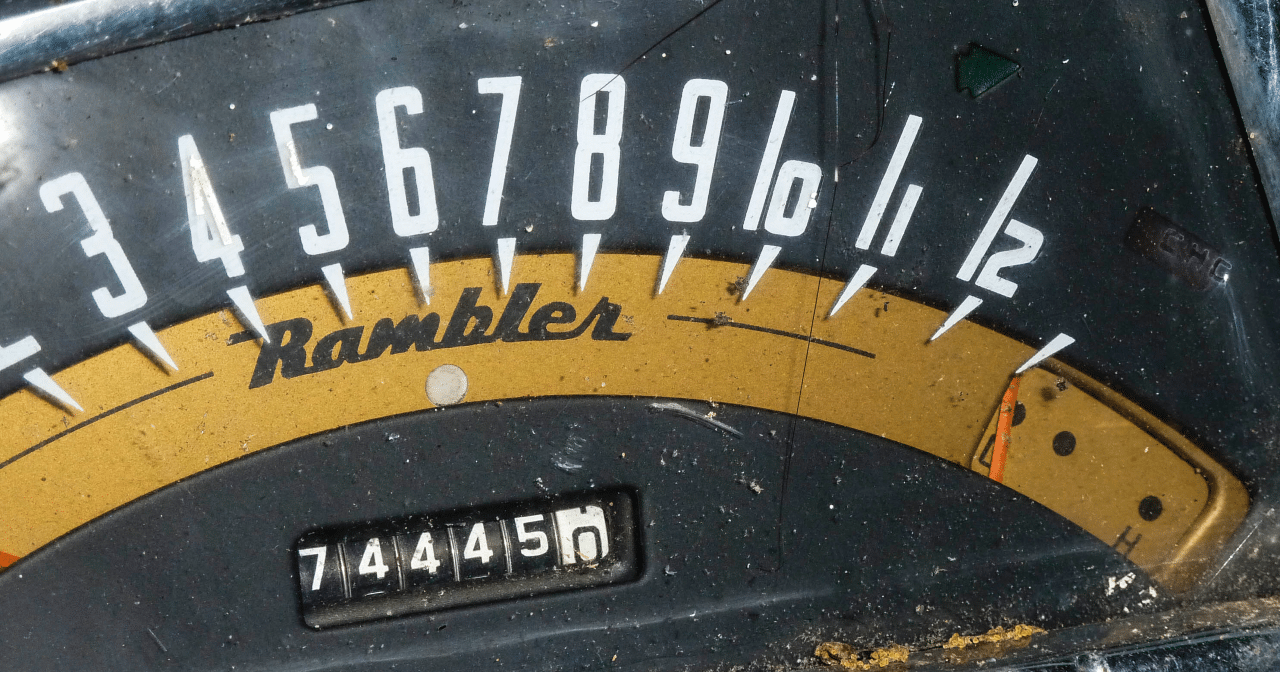
Information for this article was obtained from am article about the Ramble Six and V8 engines on Wikipedia.com and links therein to information on howstuffworks.com and articles published in 1956 in Popular Mechanics and Life Magazine. Photos of the restored 1957 Rambler were taken by Christopher Ziemnowicz at the 2011 Potomac Ramblers Club meeting in Maryland and placed in the public domain on Wikipedia Commons. All other photos were taken by the author in 2014.
